
In Fushimi-ku, Kyoto, Japan is one of the most visited areas in Japan and it’s called Fushimi Inari Taisha.
The location happens to be the head shrine of Inari (The Japanese kami of foxes, of fertility, tea and sake, of agriculture and industry) and many people come to this location for general prosperity and success.
Inari Okami, the enshrined deity of Fushimi Inari Taisha, was enshrined on the first Day of the Horse of the second month of 711, during the Nara Period and back in 2011, the shrine celebrated the 1300th anniversary of the enshrinement.
Founded in 711AD on Inari Mountain (and the main shrine structure built in 1499), the shrine is located at the base of a Mt. Inari which is 233 meters above sea level (764 feet high) and there are trails leading up to the mountain with thousands of orange torii gates leading the way. And each time you go up there are more paths that branch out leading to many areas, so to explore the entire area, probably will take more than a day’s worth.
The climb up takes about two hours, some who try to compete to beat their time but it’s one of the things that I never completed. I climbed 75% up, it started to sprinkle and I had to make a decision, keep going up and let it rain or make it down and enjoy the rest of my trip and make it to the Bamboo Forest? I chose the latter.
And while I have no regrets about the decision I made, I do have regrets that I never finished going all the way up, so I’m contemplating on doing it again two weeks from now or visiting a whole different area. So, we’ll see.
For the first part, I will be discussing the part everyone sees when entering the Fushimi Inari Taisha.

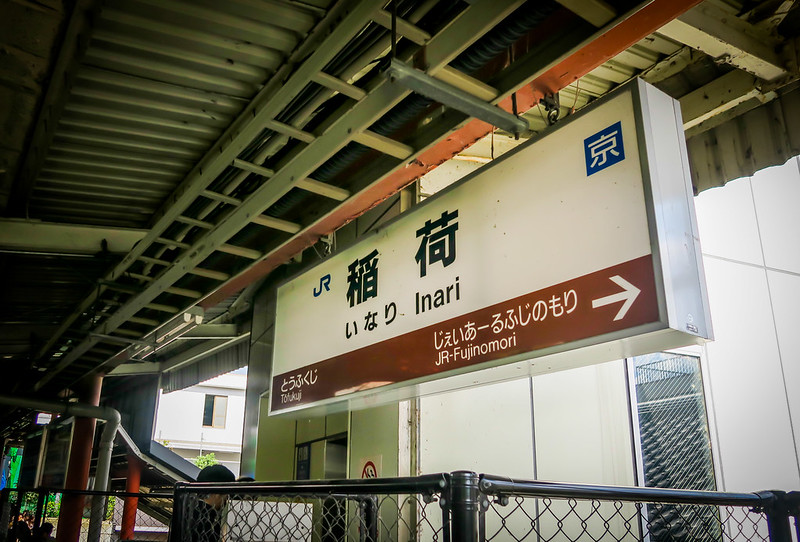


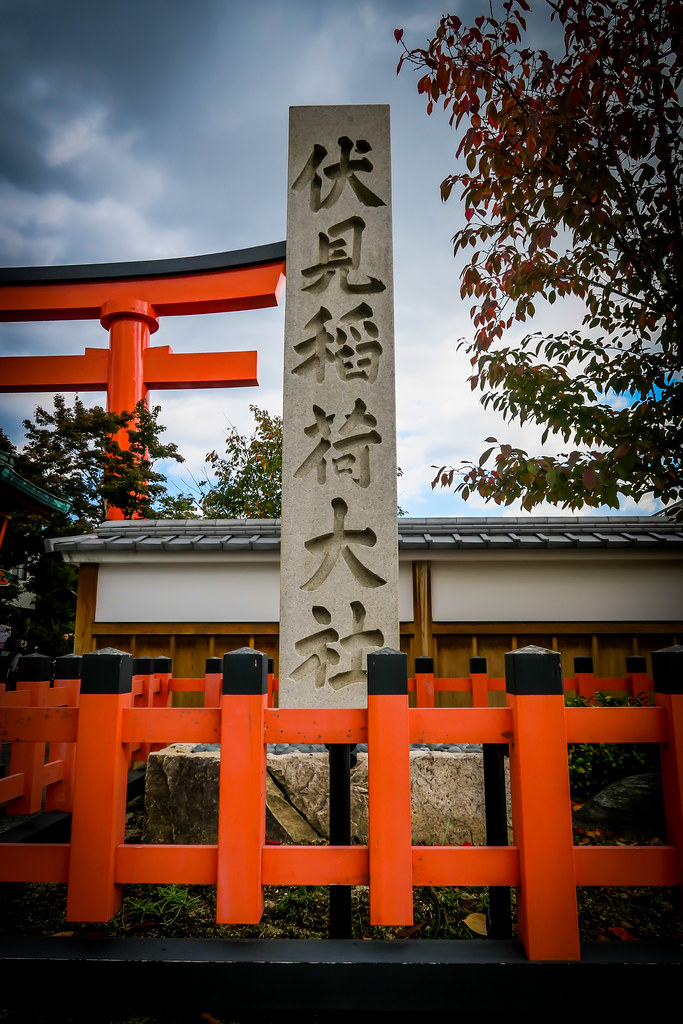
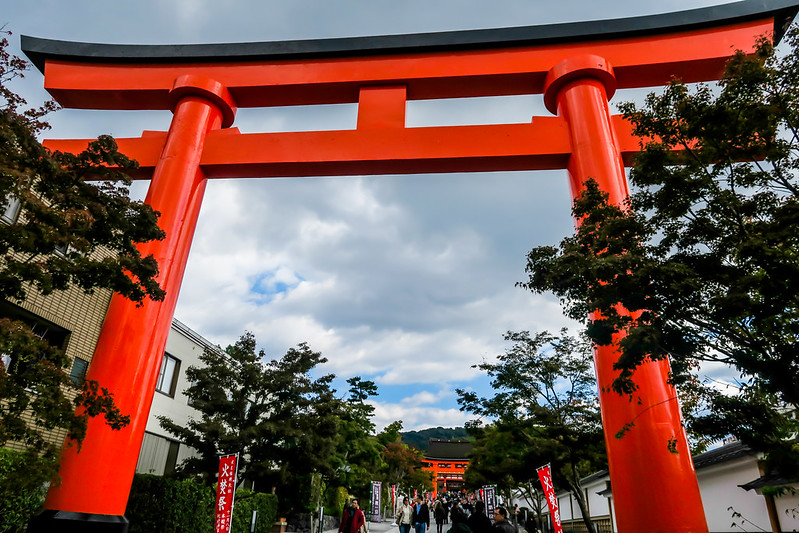
The first thing you will notice immediately early in the morning is that there are hundreds of people there and everyone taking photos of the first torii and seeing a black fox with corn in its mouth.


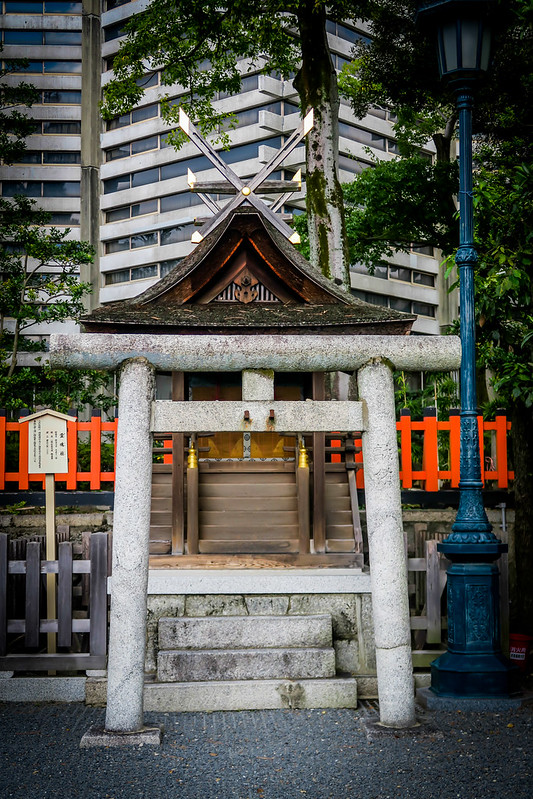

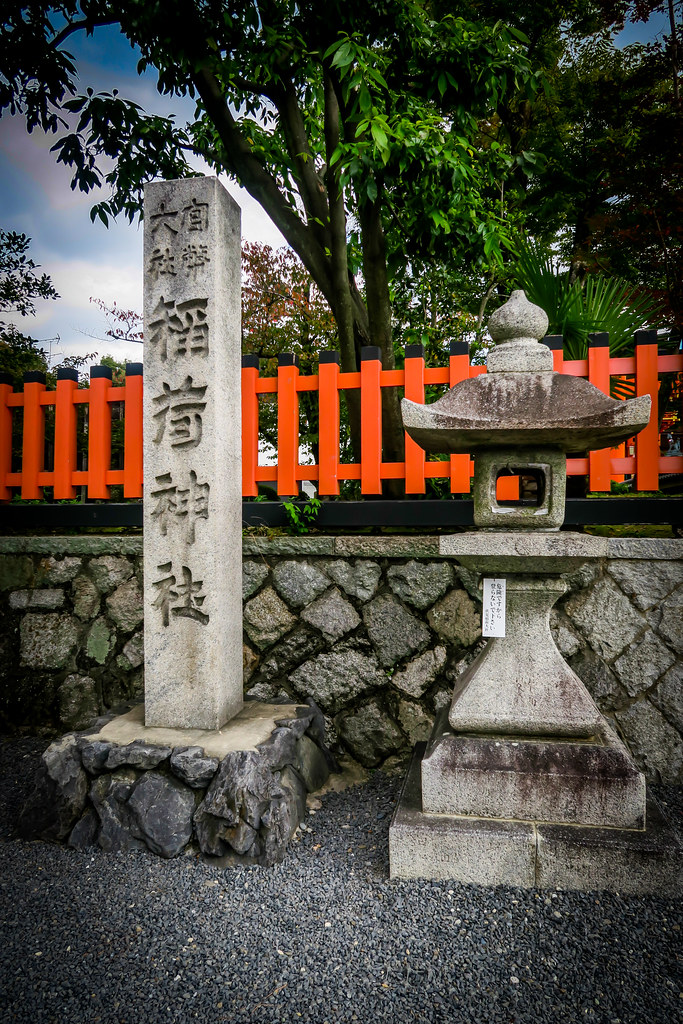
And you will then pass by the Torii as you walk up on ahead and you will see an area where you will see people praying. As you move forward, you will then get to another Torii gate leading to a huge gate known as Romon.
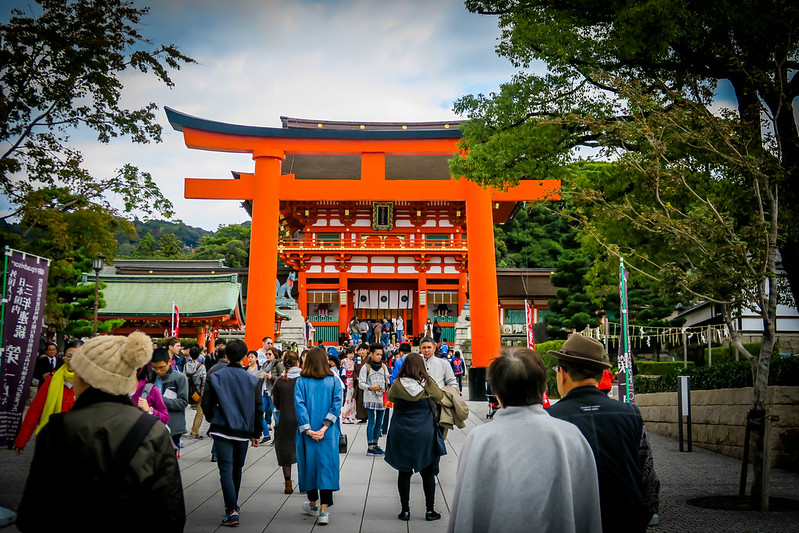
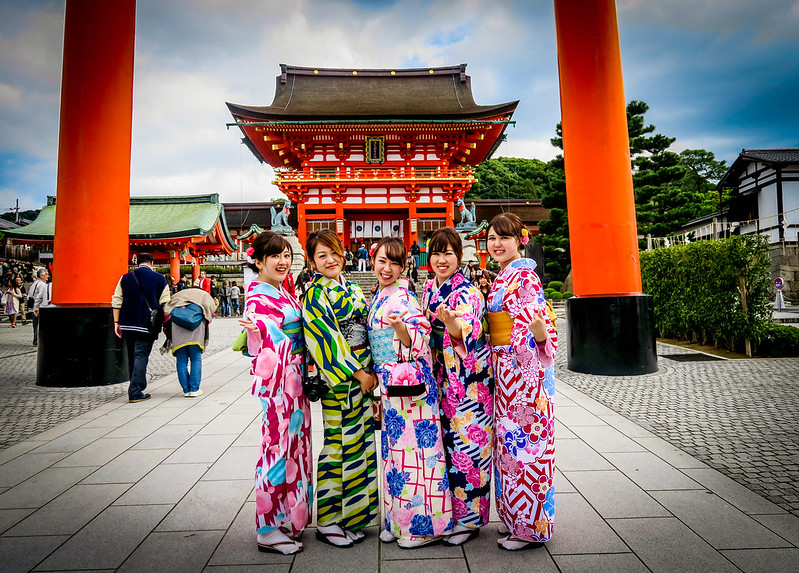
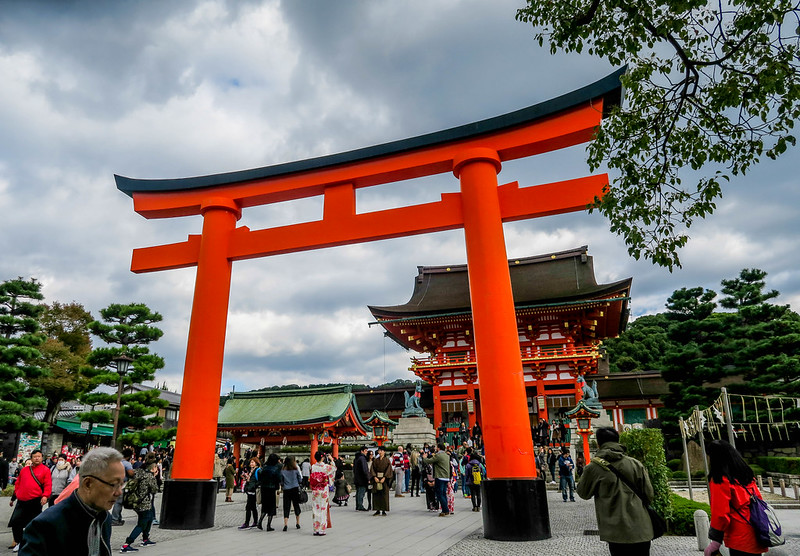
According to the Inari website, “the shrine is designated as an Important Cultural Property, the main shrine building contains five shrines together: a lower shrine, a middle shrine, an upper shrine and auxiliary shrines Tanaka Shrine and Shino-Okami Shrine. The five pillars of Fushimi Inari Taisha are named for the great virtues of Inari Okami that they embody.”
The first huge structure you will see is called Romon. According to the Inari website:
This building is said to have been built by the regent Toyotomi Hideyoshi in 1589.
It is said that when Hideyoshi’s mother fell ill, Hideyoshi prayed to Inari Okami, pledging to donate 10,000 goku (units of rice, the currency of that time) if she recovered. His wish was granted and the Main Gate was built with Hideyoshi’s donation.
There was some doubt about the truth of this story, as there were many inconsistencies between writings about the event and the building itself. However, when the Main Gate was dismantled for repair, a text written in sumi ink was found. The text dates back to the same year as Hideyoshi’s pledge (1589), confirming that his pledge was real.

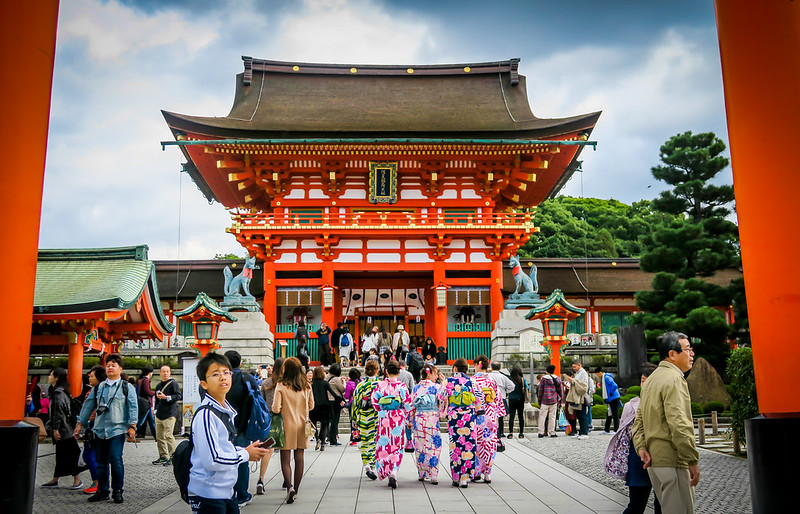

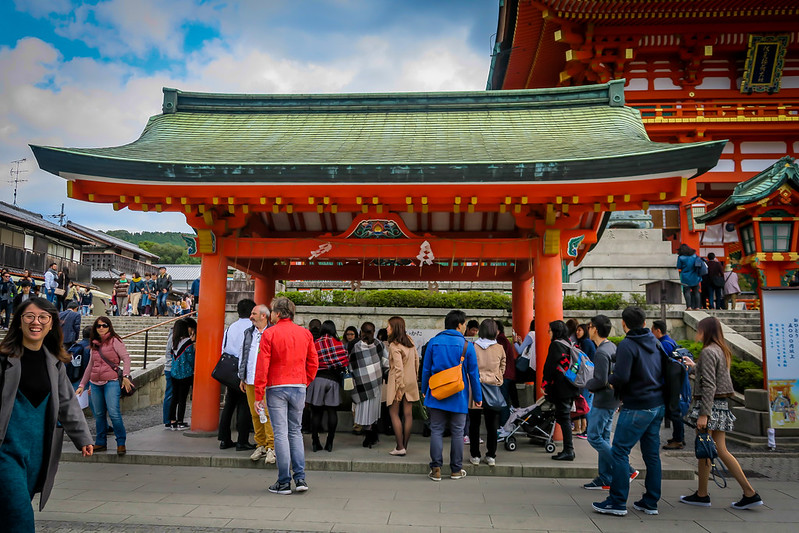
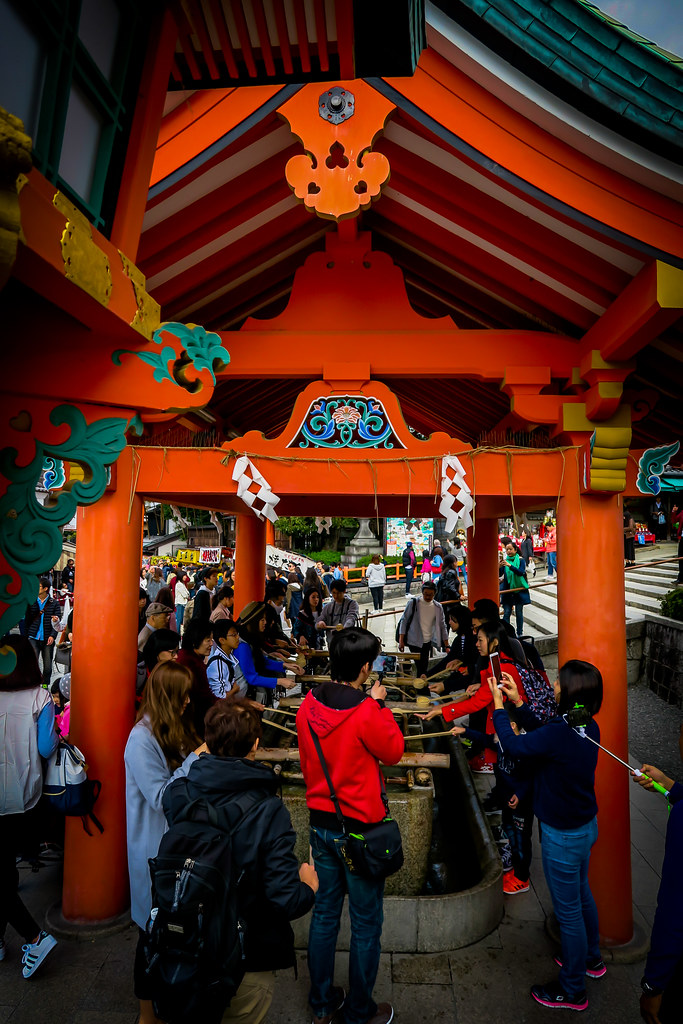
And you can see an area where people are drinking the water from the chozuya (water basin)
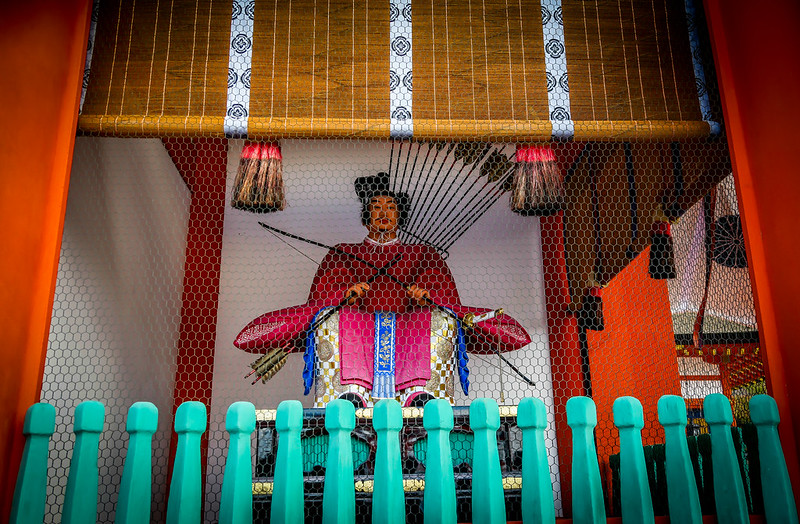
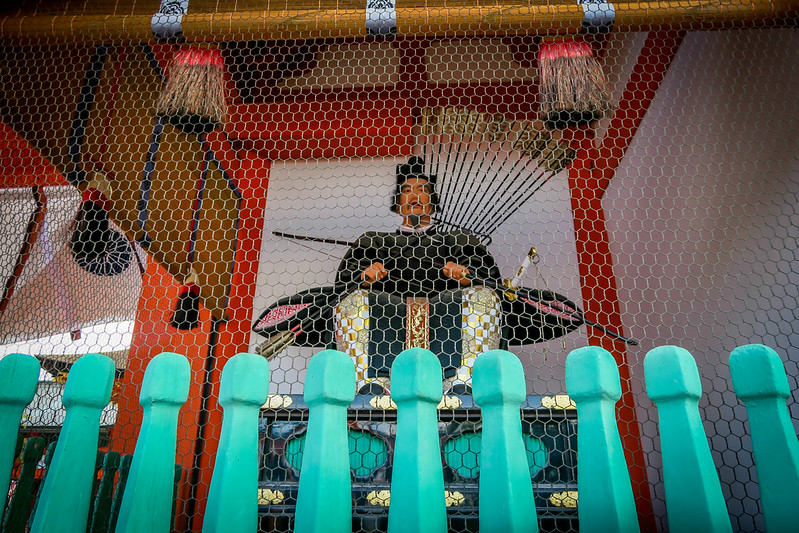


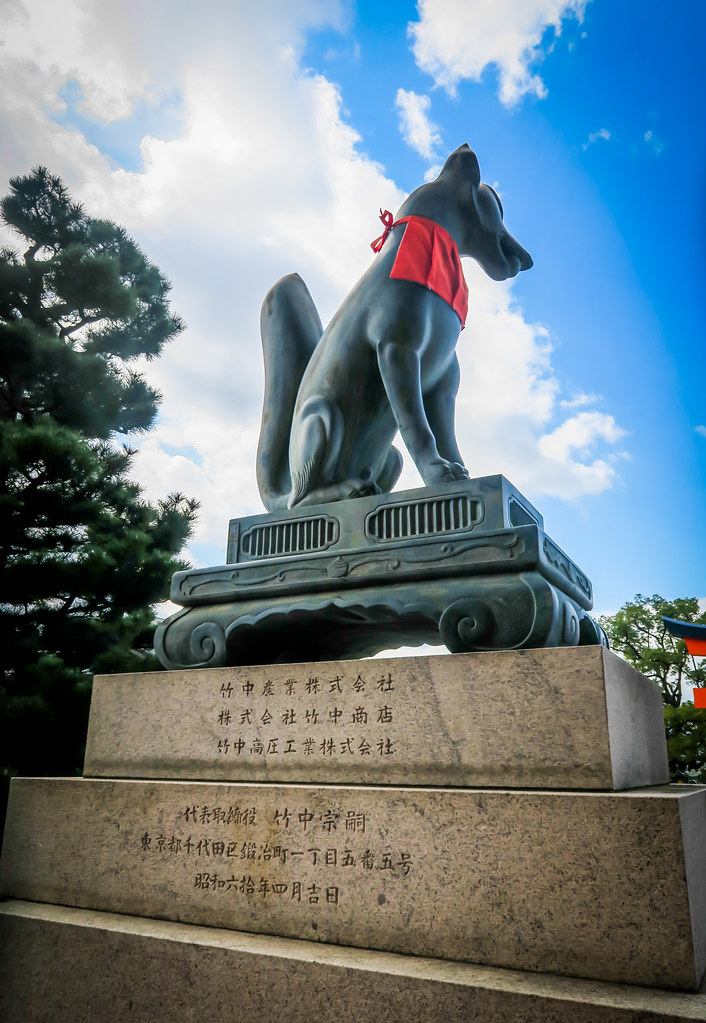
You will notice a fox (kitsune) with a key in its mouth and another with a jewel. These are symbolic throughout the statue but these two are no doubt highly photographed as they are the largest to welcome people past Romon. You will see them adorned with red bibs (yodarekake) by worshippers out of respect.

Once you move past Romon and get inside, there are various paths and structures to view.
And I will discuss more about what is inside when you get past Romon in part 2 of my post about Fushimi Inari Taisha!
